On-premise or cloud. Open source, open core, restrictive, hybrid...
Even the savviest tech connoisseur can sometimes get tangled in the rapidly evolving world of software.
Some terms can mean more than one thing. Some models sound deceptively similar but have very little in common.
Some can even be seen as ideologies (seriously).
If that foundation doesn't support your vision statement and your customers' needs, even the smartest software marketing strategy won't get you the results you want.
The entire thing will inevitably collapse.
To make the right decision, you need to know:
- What options you have
- How they differ
- Which models could support your needs long-term, and
- Which ones you’re better off without
Let’s get you untangled.
Types of Software Business Models
In terms of how you plan, build, market and make money from your software, there are a lot of options to choose from. And each choice you make affects all other aspects of your business.
For example, you could choose to build on-premise software. As an extension of that decision, you would have to come up with a marketing strategy that suits that model, and that probably wouldn’t end up looking a lot like SaaS marketing.
Does that make sense?
Depending on which way you go with one decision, you could open or close doors in other departments and drastically change the direction of your business.
Picking a software business model shouldn’t resemble a risky order from a questionable restaurant. You need to know what everything is, what species they belong to, and which combinations could get you hospitalized.
So here’s your basic atlas:
|
Category |
What it describes |
Types of software business models |
|
Distribution |
How and where you provide products to customers |
|
|
Source code licensing |
Who has access to the source code and what they are allowed to do with it |
|
|
Revenue streams |
How your company makes money |
|
|
Target audience |
Who you are selling to |
|
Some of these are pretty self-explanatory, others we will cover in more detail in a second. And, if you were wondering earlier, all software marketing starts with understanding your buyer personas.
But first, let’s talk about ethics.
Ethics of software business models
Ethics of software development refer to ethical issues, good and bad practices, questions of integrity, and law. Things like:
- Property
- Privacy
- Accessibility
- Accuracy
- Accountability
- Transparency
- Responsibility, etc.
There have been a lot of pledges and codes of conduct suggested by different organizations over time in attempts to protect users and promote values like honesty and integrity among developers.
The ACM Code talks about professional responsibilities, as well as basic human decency matters like “do no harm” and “contribute to society.”
You get the picture. Many others cover similar points, but despite that, no ethical standard has been widely adopted so far.
Now, in terms of software business models, no model is inherently more ethical than the rest. To say that would be some top-tier holier-than-thou-ism if we’ve ever seen it.
“Unethical” implies things like:
- Algorithmic bias
- Privacy breaches
- Unclear personal data ownership
- Inaccessible design
- Poor security
- Misleading information
You know, general bad practices. See also, a lack of proper software testing and hence the need for, e.g., codeless automation tools.
“Unethical” doesn’t mean “this company’s philosophy differs from ours.” Unless by “ours” you mean “legal and sane.”
But that’s exactly it. If someone hit you in the face with a shovel, you’d call them a criminal. You wouldn’t call gardening unethical.
Software as a Service (SaaS) Business Model
You might have read some stats about companies flocking over to SaaS, the market's steady expansion (estimated at $138 billion by 2022), and the recent massive profits of the industry giants.
So what makes the SaaS business model the new black?
Using a SaaS model instead of on-premise software is like renting a furnished place instead of building a house from scratch:
- All you need is already there
- The initial investment (and risk) is way lower
- You don’t have to know anything about building houses
Plus, the reality of many companies is that they need more than one tool to power them. Even if they have an on-premise package running, it’s easier for them to incorporate a SaaS product as needed than to spend a bunch of money, time, and storage to try a new on-premise package.
These are some of the sexier features of this model:
- Recurring payments (the so-called SaaS pricing model)
- Higher customer retention
- Cloud-based hosting
- Smaller but frequent updates
- Ease of use and access
For instance, next to the standard Microsoft Office package which you have to buy, you now have Microsoft Office 365, which you can subscribe to and access through the Internet.
SaaS business models can be:
- Horizontal
- Vertical
Horizontal SaaS is the standard model used by popular companies like Salesforce, Zendesk, Trello, Slack, Hubspot, etc. It’s meant to target a wide range of customers from different industries by offering services to help them run their businesses efficiently.
Because they solve a pain point shared by many industries, these products are super simple to use, but not so easy to customize.
Vertical SaaS, on the other hand, targets a very specific niche audience and solves problems unique to their industry verticals.
One such SaaS is Toast.
Instead of targeting everyone who needs help with one common pain point, Toast offers a range of services that solve multiple pain points unique to restaurants, with separate landing pages for each.
This approach allows companies to have all their needs met by one product, instead of having to mix and match universal apps and use just one or two of their features or waste precious time on customization.
Vertical SaaS has been on the rise recently with less competition and high customer acquisition rates.
Open Source Software Business Models
An attitude. A lifestyle. A commitment to the greater good. Open source is often described as a set of values rather than a mere business model.
The three main reasons are:
- Its source code that anyone can access, modify or enhance
- Depending on the license, it’s fully customizable
- It promotes collaboration and community values
Despite how that sounds, open-source can actually be a lucrative business model. Some of the most popular examples are Linux and Mozilla Firefox. If you scroll to the bottom of Mozilla’s support site, you can find its source code...
... and take a peek behind the scenes.
That’s an easy way to spot these good boys in the wild. If you’re so inclined, you could even volunteer to contribute to its development. As could anyone else.
That’s the appeal, anyway.
If you’re new to the concept, you might be thinking, yeah that’s neat, but how does that work as a business model?
Well, it takes a bit of work, but there are four common approaches:
- Support
- Hosting
- Open-core
- Marketplace
Here’s a very simplified explanation of each model:
|
Support |
Hosting |
Open-core |
Marketplace |
|
Refers to selling access to a fully managed, typically cloud-based infrastructure. |
Offers all functional features of the software for free, but charges for premium features. |
Platform that offers products and services from multiple vendors in one place. |
|
Examples:
|
Examples:
|
Examples:
|
Examples:
|
Most businesses offer some combination of these.
To recap:
- Open-source is great because it’s completely customizable
- It can be tricky to get into as you usually need some level of expertise
- If you’re not a professional developer or IT-curious, it’s not as user-friendly
- Despite that (and sometimes because of that), the open-source model is still very much on the rise
Take a look at these metrics and judge for yourself.
Image source: bcg.com
Software Licensing Business Models
Software licenses are basically the terms of use you have to sign when you’re buying software. They regulate things like who gets to inspect and edit the source code, under what circumstances, whether you’re allowed to share the code with or without the modifications, etc.
We mentioned proprietary and open-source licensing, but there are many more models for businesses to choose from.
Most popular types of licensing business models:
|
Perpetual licensing |
Floating licensing |
Subscription-based licensing |
Feature-based licensing |
Cloud-based licensing |
|
The user pays for a copy of the software all at once and is able to use it forever. Future versions and enhancements are not included. |
Lets companies decide how many licenses they want to share among the employees in-house, so they don’t have to buy a separate one per individual user. |
Implies the user is paying for access to the software on an ongoing, recurring basis without a specified end date. |
The vendor controls which features the user has access to and sometimes limits how many times the feature can be used. This is a subtype of the metered license. |
Allows the user to host their software on the cloud so they aren’t limited to any one device if they need to access it. |
But why stop there? Here are some other common models:
- Network
- Element pools software
- Consumption-based
- Account-based
- End-date based
- Suite-based
- Trial
We could keep going.
With seemingly endless options, how should you choose?
Firstly, if you’re building a business, the software license shouldn’t be among the first decisions you make. This choice should be based on your product and desired direction, not the other way around.
Your options will narrow down on their own when you make that decision anyway. Building a SaaS product? Well, a perpetual license shouldn’t linger in your thoughts.
Another important thing to note is that you’re allowed to offer multiple different licenses.
It all depends on what you want to sell. So here are some prompts to help you decide:
- What type of software business are you building?
- What terms would you like to give your customers?
- Are there any limitations you want to impose?
- What distribution and pricing models are you going to use?
- Which license sounds closest to what you had in mind?
If you can’t decide yet, don’t worry. This might be one of those things you have to put in a mental drawer and revisit later.
Cloud Software Business Models
Cloud-based software has been one of the defining models of the past decade and continues to soar today.
These are its key features:
- Remotely-hosted infrastructure, platforms, and apps
- Internet-based access through any device
- Resource pooling and automation of services
As we collectively continue to spend more time on our smartphones, tablets and other devices, these features are only becoming more attractive with time.
Before we get to the juicy part of the story, let’s quickly cover the logistics. So, when it comes to cloud infrastructure, you’ve got your basic four categories:
- Public Cloud
Offers storage and sources that are openly shared, owned, and run by a service provider. It’s the least secure of the options and is best suited for pay-per-use deals.
- Private Cloud
Intended for a single organization or company. It can be operated on or off-site and has better security than the public cloud.
- Hybrid Cloud
Two or more public, community or private clouds combined. Sensitive information is usually stored in the private section while the rest can be public.
- Community Cloud
Infrastructure shared by a group of organizations or businesses with similar needs.
All clear so far?
Cloud services are where the story gets interesting. Remember these three:
- SaaS (software as a service)
- PaaS (platform as a service)
- IaaS (infrastructure as a service)
We’ve already talked about SaaS, but the other two models are by no means the ugly step-sisters.
IaaS
Infrastructure as a service offers the basic, raw setup required to build and deploy applications on-demand and compensated on a pay-per-use basis.
Compared to SaaS and PaaS, this model provides the lowest level of control but higher flexibility.
IaaS services include the essentials, like IT facilities, storage, networking, firewalls, and servers to help you:
- Avoid the costs of owning and maintaining on-premise infrastructure
- Scale up or down as needed
A great example of IaaS is Microsoft Azure.
If you’re still not convinced of the potential in Iaas, just remember that the global IaaS market grew 40.7% in 2020. It may be time to start thinking about what sort of infrastructure you’d like to develop.
PaaS
Platform as a service offers the full environment necessary to develop and run an application in the cloud. It builds on the IaaS foundation, but also includes:
- Development tools
- Middleware
- Embedded Business intelligence
- Graphic user interface, etc.
Basically, PaaS supports the entire application development cycle.
The only things a PaaS customer has to worry about are how to build apps and services they want to offer. Everything else is taken care of by the platform, stored on the cloud, and paid per-use.
A prime example of this model is Heroku.
Like Iaas, the global PaaS market is growing with new Heroku alternatives and is expected to reach $319 billion by 2030.
Final Word on Software Business Models
Weighing out the available software business models and picking the right solution is the first and most vital decision for your company.
There’s no obvious winner here. No, all models aren’t equal either, but your perfect combination really depends on your
- Niche
- Expertise
- Target audience
- Technical requirements
- Business objectives
- Personal preference, etc.
Now that you know what’s out there, you can pick one or two options that obviously satisfy most of your needs and go from there.
Want to learn more about the world of software beyond business models? Then feel free to take a look at some of our other articles.

Ulf Lonegren
Ulf Lonegren is CEO and Co-Founder of Roketto, where he has led digital marketing strategy for over 15 years. With extensive experience in both traditional SEO and emerging AI search optimization, Ulf has guided hundreds of SaaS and ecommerce companies through major search algorithm updates and platform shifts. His expertise spans from the early days of Google's algorithm changes through the current AI revolution, giving him unique insight into what actually drives sustainable search visibility. Ulf's approach focuses on fundamental optimization principles that adapt to new technologies rather than chasing trending acronyms, a philosophy that has helped Roketto's clients achieve measurable growth across multiple search paradigm shifts.












2.png)
2.png)









